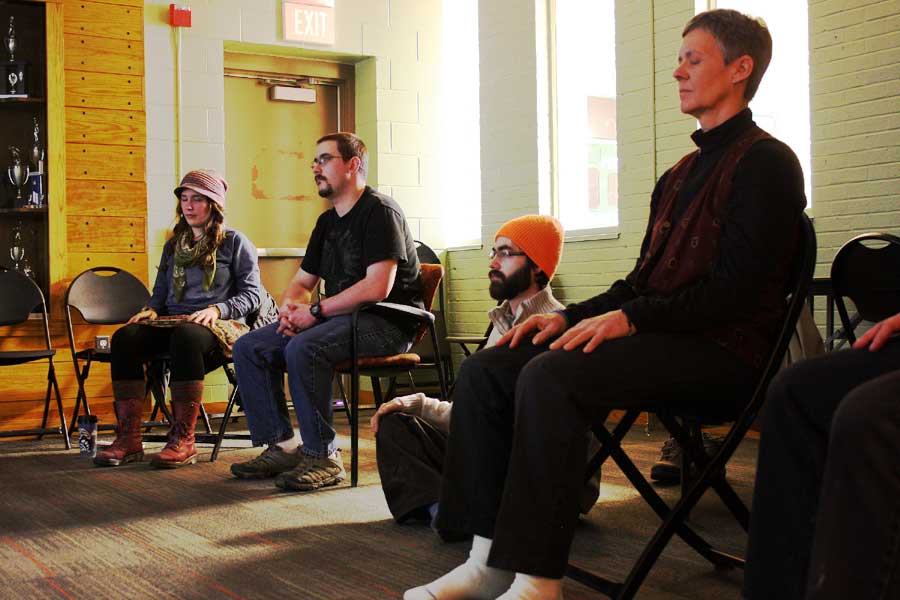Sit and Breathe
At the first meditation session in the SHAPE function room on Jan. 30, students and faculty focus on their thoughts.
A year of slogging through a backlog of homework, research papers, and presentations for four or more classes while also trying to hold down a job and still spend time with friends and family can overwhelm even a hearty person. Toss pressure from parents to excel or friends to socialize into the mix and you have a whirlwind instead of what should be the time of your life.
Fortunately, some staff from Academic Support Services have a suggestion: Sit and breathe.
For half an hour every Thursday at 1 p.m., Learning Resource Center Coordinator Martha Lance and Staff Assistant Carolyn D’Luz said they will be planning a meditation in the SHAPE function room. They held the first session Jan. 30 and nine staff members and students watched a 10-minute video and then sat in silence for another 10 minutes.
The concept was inspired by the Susan Piver’s Open Heart Project, a free series of emails and brief video clips meant to inspire and provide easy meditation instruction. Unlike other meditation techniques where people struggle to keep their blank, Lance said Piver’s Shambhala-based guidance encourages people to sit comfortably with eyes open and pay attention to what goes through their brain.
“Be gentle with yourselves,” Lance said at the session. “It’s okay to have thoughts. And if you’re more comfortable practicing your own way, go for it. My only hope is that your contemplations will be valuable.”
Lance emphasized that they were not certified instructors, but only people who have practiced meditation and have experienced personal change from it. Eight years ago her doctor prescribed meditation because she was so high-strung, and since then incorporated it into her life. Describing the approach as a meeting of East and West, she said just practicing 10 minutes a day can change a person’s life.
A handout at the session offered this quote by Dorje Dradül as way of explanation: “Although the Shambhala tradition is founded on the sanity and gentleness of the Buddhist tradition, at the same time, it has its own independent basis, which is directly cultivating who and what we are as human beings…”
Edmund Harris, a senior majoring in Environmental Science/Natural Resources, said he was glad this was being offered to students. For the past month he’s been enjoying the one-credit course Yoga: Sustainable Living. His goal for coming to the half hour of meditation: to be healthy and less stressed.
“Just in the past month I’ve had higher energy levels and have been more alert,” he said. He added that heart disease is a big problem for men in the United States and that “anytime you breathe deeply it helps your heart.”
Sessions are informal; people can show up or leave as they please during the half hour and practice their meditation. Lance added that anyone can go to Susan Piver’s website, susanpiver.com, and sign up for the emails and watch the videos. Both Lance and D’Luz encourage daily practice for best results.
“All [meditation] has a common thrust of making you still and not reactionary,” D’Luz said. “Be a witness to your thoughts, step aside and look at them. They do not have such a powerful hold on your when you are a nonjudgmental witness.”



